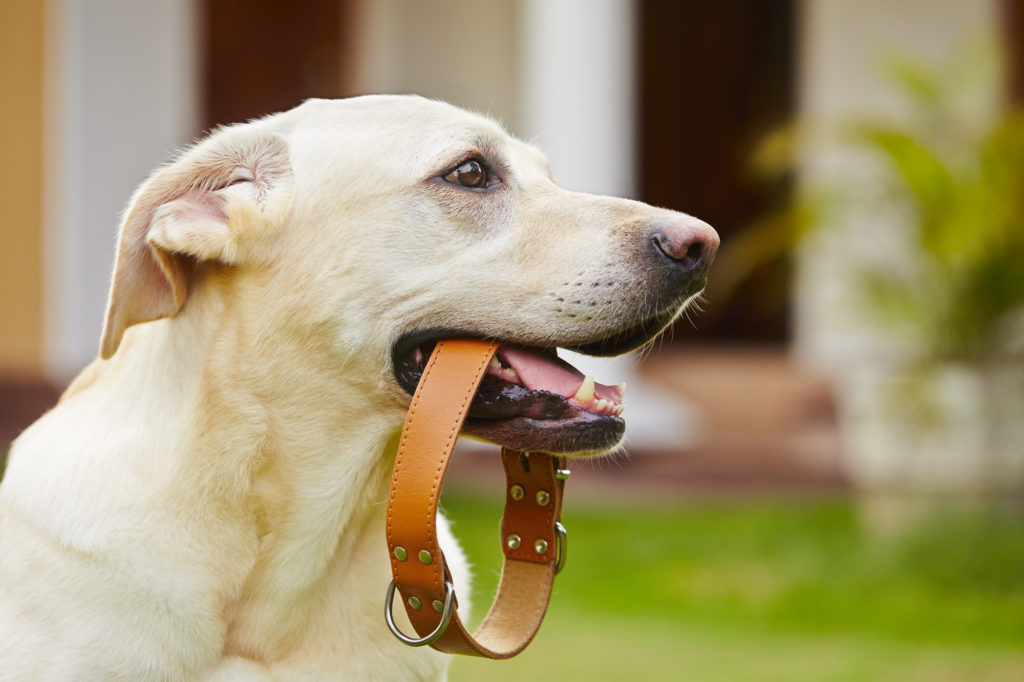
The day has finally come. You went out and brought home a new furry friend, your first puppy! You’ll soon learn the truth behind the saying that dog’s are man’s best friend.
Or maybe you’re already a dog owner, but you’re looking to upgrade your pup’s accessories. Either way, there’s a lot that goes into buying a new dog collar.
All the different terms probably have your head spinning. What’s the difference between a cotton dog collar, a breakaway dog collar, and a leather martingale dog collar, you ask?
Don’t worry– help is on the way. Read on to learn everything you need to know about collars for dogs, and how to choose the right one for your furry friend.
Think About Your Needs
There are a slew of specialty dog collars out there that might cost a pretty penny but can help you with training, fleas, and even GPS location. Owning a dog isn’t easy, so why not invest in a collar that will give you a hand?
Prong Collars
Prong collars sometimes get a bad rap for seeming inhumane, but the reality is that they’re an excellent training tool for large dogs. If your dog weighs as much as you, a prong collar could help you rein him in while you’re on walks together.
When your large dog sees another dog and they’re not yet fully trained, they’ll often lunge to meet or even try to attack the other dog. If he’s stronger than you, this can easily send you flying.
Prong collars help you avoid being pulled through the mud on your belly by your large pup. They’re designed to mimic the feeling of a mother dog pulling on her pup’s neck– a light poke that helps you remind your dog of the behavior that’s expected of him. They’re not super sharp or harmful like some people assume.
Electric Collars
When you work all day, having a dog can be difficult. Lunch breaks are often spent running home to let the dog out. If you don’t have a fenced in backyard, this often seems like the only solution.
Enter: electric collars. They allow your pup to roam the yard freely, without fencing. Whenever they get too close to the boundary you set, they experience a sensation that tells them to stay away. This can be anywhere from a tickling feeling to a stronger, electrical zap.
Electric collars are very controversial since they’re so frequently misused. If used correctly, though, they can be painless training tools for dogs that allow them to roam the yard freely. That’s better than being stuck in the house all day!
GPS Collars
How many times have you come home to a trench dug beneath the fence and your dog nowhere in sight? Finding your furry friend is a whole night’s activity in itself. GPS collars are a game changer for the adventurous pup who considers himself the ultimate escape artist.
Embedded chips are great, but those are only useful once your dog has been scooped and taken to a lost animal shelter. Sometimes, animal shelters don’t even scan for them, either. With a GPS collar, you’ll never be in the dark about where your dog is.
There is a slew of GPS collar options on the market today. Some even connect to your phone via an app, which makes locating your lost pup as easy as pushing a button.
Flea Collars
Fleas thrive in humid, shady, damp environments. Do you live in an area where fleas thrive? If so, a flea collar might be a good idea for your pup.
Although flea collars aren’t designed to treat an existing flea problem, they are excellent for helping prevent one. They emit a gas which repels the little pests, making them less likely to hop onto your pup’s back for a ride (and a snack).
Choose the Right Style
If you don’t need a specialty collar, there are tons of regular collar styles to choose from.
The traditional buckle style features many holes to size up as your pup grows, and it’s got that classic dog collar look. Quick buckle styles will use a plastic buckle instead of metal. Quick buckle collars are great for pups who don’t like to wear their collar unless they’re outside.
O-ring collars, or safety collars, are essential for outdoor dogs who live in a wooded area. If your pup gets his collar stuck on a branch or bush, the O-ring provides a pivot point to help your dog break free, releasing them from danger.
Martingale collars are perfect for dogs who love to pull when you walk them. If this sounds like your pooch, consider this style. It distributes the pull of the leash evenly, preventing placing too much pressure on the front of your dog’s neck.
Martingale collars are also great for dogs with anxiety. If your dog startles easily, the collar’s extra length will prevent him from accidentally choking himself by pulling on the leash unexpectedly.
After you’ve chosen your style, add some pizzazz! Take time to learn all about the different collar styles out there. You can get bedazzled collars to show off your dog’s personality, or a Christmas collar around the holidays!
Consider Material
Dog collars are typically made out of many different materials since each lends itself best toward certain applications.
Nylon, for instance, is super pliable. It won’t itch your dog’s skin by rubbing up harshly against his coat, and it stays comfortable while your dog sleeps. If your dog is having a hard time sleeping, an uncomfortable collar could be the culprit, or you might need to look into another solution.
Nylon can get pretty smelly when exposed to water consistently, though. Synthetic leather, or waterproof biothane, is a no-brainer when it comes to dogs who love to go for a swim. It’s made of polyester and coated with vinyl, so it’ll hold up to anything.
Bonus: it comes in reflective and glow-in-the-dark, which ups your pup’s safety.
Leather is the classic option for a reason. Not only does it look super elegant, but it feels the best on your dog’s skin. Leather collars will soften over time with exposure to your dog’s skin oils, making it smooth and comfortable.
Personalization
Personalization is where the fun starts with your dog’s collar! This is where you get to choose a font and stamp their name so they can present themselves proudly to the world!
Fido Is Family
Since your pup is a member of your family, it only makes sense that you’d want to take care of them just as well as you do your kids. Stamping your pup’s name on his collar is a great way to make him feel more like a part of the family. There’s nothing like the jingle of nametags running from the other room to greet you when you get home from work.
Helps With Identification
Collar personalization is also essential for identification. If you don’t have a GPS collar or a chip, your dog’s collar is the only way he can be traced back to you if he gets lost.
Beneath his name, make sure to put your phone number, email address, and home address so the kind soul who finds him can safely return your pal to you.
Purchase Your Leash
It’s a good idea to purchase your leash at the same time as your collar. This will ensure that you get the correct leash for your collar type and that the two will match! You’ll be trotting in style, the envy of every dog owner at the dog park!
The main choice when it comes to leashes is whether or not you want an extendable leash. Extensible leashes usually hold about eight feet of cord wrapped up inside a handle, allowing more room for your dog to roam. These are great for adventurous dogs who love to explore all the smells around them.
Short leashes are best for dog owners who take dogs out primarily for exercise. If you like to run with your dog, stick to a short leash. They’ll help your pooch keep his eyes on the road ahead of him, and avoid him darting into traffic.
Alternative Collars
Neck collars aren’t the only shape out there. Another popular one is dog harnesses.
Harnesses wrap around your dog’s body instead of their neck. These are for dogs who don’t like to wear a collar in the house. You’ll usually only strap on the harness when you take your dog for a walk.
The biggest pro to a harness is that it teaches dogs not to pull on their leash. If this is a hard lesson for them, it can be heartbreaking to listen to your dog wheeze as they pull on a neck collar. It can also cause a whole host of damage to their neck.
Harnesses distribute the weight evenly around their chest, so there’s no pain involved in pulling. The harness also keeps dogs from pulling in the first place, since they feel less restricted.
A Handle on Collars For Dogs
Now that you’ve read up on all you need to know about collars for dogs, you’re probably itching to hit the pet store and make your choice. You’ve decided on your needs, style, and material– now go out and get that pup his collar!
If you’re still searching for the perfect pet, check out our article on the best dogs for first-time owners to find your dream match!

